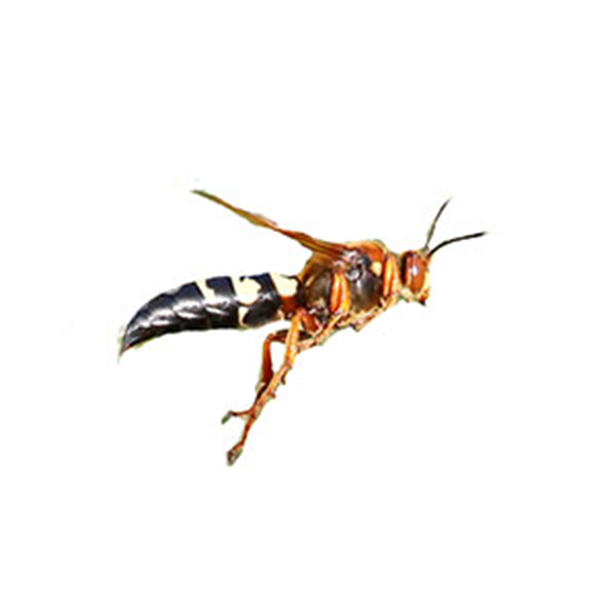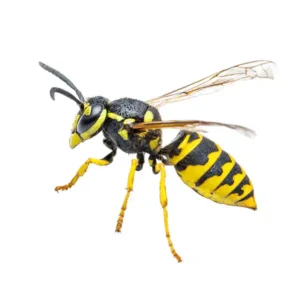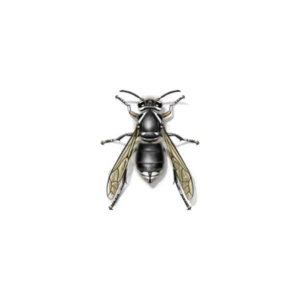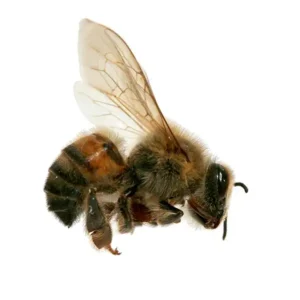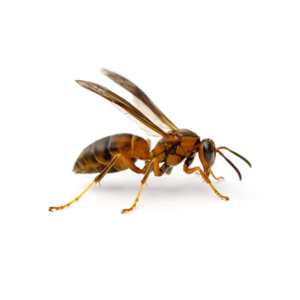Cicada Killer Wasps in Memphis TN Metro Area
Cicada killer wasps rank among the largest wasp species in North America. Females of this species frequently engage in mid-air attacks on cicadas, stinging them until they are paralyzed. The incapacitated cicadas are then transported back to the nest, where they serve as food for the wasp larvae. Cicada killers can be found across various regions of the United States, Mexico, and parts of Central America. These wasps exhibit a preference for soft, sandy, and well-drained soil, where they dig holes or burrows. It is not uncommon to encounter them in sloped terrains, flower beds, along patio edges or sidewalks, and throughout the yard.
Cicada Killer Wasp Habitat
Cicada killer wasps emerge as grown-ups during the latter part of June or July and are commonly observed buzzing around flowers or excavating tunnels in sandy or loose soil. These wasps construct their nests in the ground close to areas inhabited by cicadas. Many of their burrows can be found scattered across lawns and golf courses, often marked by a mound of soil surrounding the entrance. To protect their territory, male wasps diligently patrol the area, chasing off any potential threats.
Cicada Killer Wasp Behaviors, Threats, or Dangers
Compared to other types of wasps, cicada killers are generally not very aggressive and rarely sting humans or pets, unless they feel threatened. Male cicada killers are territorial and display aggression, but they do not possess a stinger. If stung by a cicada killer wasp, it can cause significant pain, and in some individuals, their venom may trigger an allergic reaction.
Having cicada killers on your property can become bothersome. Female wasps create rather large burrows, resulting in considerable disruption near plants and vegetation. The digging behavior of these wasps can harm plant roots and make certain structures, such as walkways or pathways, unstable. If you are dealing with a cicada killer wasp problem, contact your local wasp removal experts for help.

